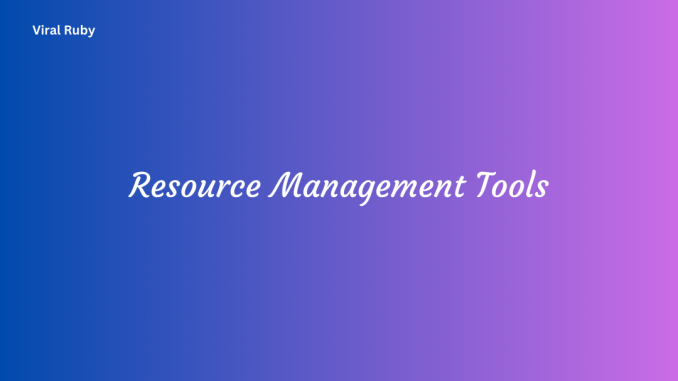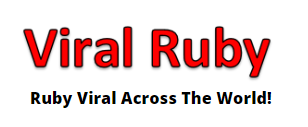
Resource Management Tools Key Features and Functionality
Introduction to Resource Management Tools
Resource management tools are software applications or platforms designed to assist organizations in effectively managing and optimizing their resources. These tools provide functionalities to plan, track, allocate, and analyze various resources, such as human resources, equipment, facilities, and finances. By using resource management tools, businesses can streamline their operations, enhance productivity, and make informed decisions regarding resource allocation.
These tools typically offer features that enable businesses to create and manage resource schedules, assign tasks to team members, monitor progress, and track resource utilization. They provide visibility into resource availability and help prevent overbooking or underutilization of resources. With the help of resource management tools, organizations can effectively allocate resources based on project priorities, skills, and availability, ensuring that the right resources are assigned to the right tasks at the right time.
One of the primary benefits of resource management tools is the ability to optimize resource allocation. By gaining insights into resource utilization and availability, businesses can identify bottlenecks, balance workloads, and allocate resources efficiently. This leads to improved project timelines, increased productivity, and better overall project success rates.
Resource management tools also facilitate collaboration and communication among team members. They provide a centralized platform where teams can access project information, share updates, and collaborate on tasks. This enhances coordination, eliminates the need for manual tracking and communication, and promotes transparency within the organization.
Moreover, resource management tools often include reporting and analytics capabilities. These features enable organizations to generate reports on resource utilization, project progress, and overall performance. By analyzing these reports, businesses can identify trends, make data-driven decisions, and optimize their resource allocation strategies for future projects.
Key Features and Benefits of Resource Management Tools
Resource management tools offer several key features and benefits that help organizations efficiently allocate and utilize their resources. Here are some of the key features and benefits of resource management tools:
Resource Planning: Resource management tools enable organizations to effectively plan and allocate resources based on project requirements and team availability. These tools provide a centralized view of resource availability, allowing managers to allocate resources to projects in a balanced and optimized manner.
Resource Tracking: These tools allow organizations to track and monitor the utilization of their resources. Managers can easily identify which resources are being used, their current status, and the amount of time spent on specific tasks or projects. This information helps in identifying potential bottlenecks, optimizing resource allocation, and making informed decisions.
Resource Scheduling: Resource management tools facilitate the scheduling of resources by providing visual timelines and calendars. Managers can easily view and adjust resource assignments, ensuring that the right resources are allocated to the right projects at the right time. This feature helps in avoiding conflicts and ensuring efficient resource utilization.
Capacity Planning: With resource management tools, organizations can analyze resource capacity and plan for future projects. These tools provide insights into resource availability, allowing managers to assess if they have sufficient resources to take on new projects or if additional resources need to be allocated or hired. Capacity planning helps in avoiding overloading resources and maintaining a balanced workload.
Collaboration and Communication: Resource management tools often include collaboration features that facilitate communication among team members and stakeholders. These features enable teams to share information, update task statuses, and collaborate on project-related discussions. Improved communication helps in enhancing teamwork, reducing miscommunication, and increasing overall productivity.
Reporting and Analytics: Resource management tools offer reporting and analytics capabilities to provide valuable insights into resource utilization, project progress, and performance metrics. Managers can generate reports on resource allocation, utilization rates, project timelines, and budget utilization. These reports aid in evaluating resource efficiency, identifying areas for improvement, and making data-driven decisions.
Cost Optimization: By effectively managing and optimizing resource allocation, organizations can reduce costs associated with underutilized resources or unnecessary hiring. Resource management tools enable organizations to maximize the utilization of their existing resources, minimize idle time, and avoid overstaffing. This helps in optimizing costs and improving overall operational efficiency.
Real-Time Updates and Notifications: Resource management tools often provide real-time updates and notifications regarding resource availability, task assignments, and project changes. This feature ensures that team members are always aware of their responsibilities, deadlines, and any changes that may affect their work. Real-time updates enhance transparency, minimize confusion, and improve coordination among team members.
Implementing a Resource Management Tool: Best Practices and Considerations
Implementing a resource management tool requires careful planning and consideration to ensure successful adoption and effective utilization within an organization. Here are some best practices and key considerations to keep in mind:
Define your requirements: Before selecting a resource management tool, clearly define your organization’s requirements and objectives. Identify the specific features and functionalities you need, considering factors such as resource allocation, scheduling, reporting, collaboration, and integration with existing systems.
Involve stakeholders: Involve key stakeholders from various departments or teams in the selection and implementation process. This ensures that the tool meets the needs of different users and that their input and concerns are considered.
Conduct thorough research: Research different resource management tools available in the market. Evaluate their features, ease of use, scalability, customer support, and pricing models. Consider reading reviews and seeking recommendations from other organizations in your industry.
Integration capabilities: Assess the tool’s integration capabilities with your existing systems, such as project management software, collaboration platforms, and financial management tools. Seamless integration can streamline workflows and eliminate duplication of efforts.
User-friendliness and training: Choose a tool that is intuitive and user-friendly. Consider the learning curve for your team members and assess the availability of training resources, documentation, and customer support provided by the tool vendor.
Customize to your needs: Look for a resource management tool that allows customization to fit your organization’s specific processes and workflows. Flexibility in configuring fields, views, and reports can ensure that the tool aligns with your existing practices.
Start small and scale: Implement the tool gradually, starting with a pilot project or a specific team. This approach allows you to test the tool’s effectiveness and make adjustments before rolling it out organization-wide. It also helps in gaining user buy-in and support.
Data accuracy and maintenance: Establish guidelines and processes for maintaining accurate and up-to-date data in the resource management tool. Encourage users to regularly update resource availability, skills, and schedules to ensure accurate resource allocation.
Training and support: Provide adequate training and support to users during the implementation phase and beyond. Conduct training sessions, create user guides, and offer ongoing support to address any questions or challenges users may face.
Monitor and optimize: Regularly monitor the tool’s usage and performance. Collect feedback from users and track key metrics such as resource utilization, project timelines, and overall productivity. Use this data to identify areas for improvement and optimize your resource management processes.
Essential Functionality of a Resource Management Tool
Resource Database: The tool maintains a centralized database of all available resources within an organization. This includes information such as resource skills, availability, roles, and other relevant attributes. The resource database serves as a single source of truth for managing and accessing resource information.
Resource Allocation: The tool enables managers to allocate resources to different projects or tasks based on project requirements and resource availability. It allows for efficient resource assignment by matching the skills and availability of resources with the specific needs of each project or task.
Resource Tracking: The tool tracks the utilization and availability of resources in real-time. It provides visibility into resource allocation, current assignments, and the status of tasks or projects. This functionality helps in monitoring resource workload, identifying underutilized or overbooked resources, and making necessary adjustments to optimize resource allocation.
Resource Scheduling: The tool facilitates resource scheduling by providing a visual representation of resource availability and timelines. Managers can create and manage resource schedules, assign tasks or projects, and track progress against planned schedules. Resource scheduling ensures that resources are allocated efficiently, conflicts are avoided, and project timelines are met.
Capacity Planning: The tool supports capacity planning by analyzing resource availability and workload. It helps managers assess whether the organization has sufficient resources to take on new projects or if additional resources are required. Capacity planning functionality assists in making informed decisions about resource allocation, hiring, and resource utilization optimization.
Collaboration and Communication: Resource management tools often include features that promote collaboration and communication among team members and stakeholders. These features facilitate sharing of information, updating task statuses, and exchanging project-related messages. Collaboration functionality helps in improving coordination, enhancing teamwork, and ensuring effective communication across the organization.
Reporting and Analytics: The tool provides reporting and analytics capabilities to generate insights into resource utilization, project progress, and performance metrics. It offers pre-built or customizable reports that highlight key resource management metrics, such as resource utilization rates, project costs, and resource allocation efficiency. Reporting and analytics functionality assists in monitoring performance, identifying areas for improvement, and making data-driven decisions.
Notifications and Alerts: The tool sends notifications and alerts to keep stakeholders informed about resource-related updates and changes. These notifications can include task assignments, schedule changes, resource availability updates, or approaching deadlines. Notifications and alerts help ensure that team members are aware of their responsibilities and any modifications that may impact their work.
Integration and Compatibility: Resource management tools often integrate with other systems or tools used within the organization, such as project management software, human resource systems, or time tracking tools. This integration allows for seamless data exchange, eliminating the need for manual data entry and ensuring consistency across different systems.

Leave a Reply